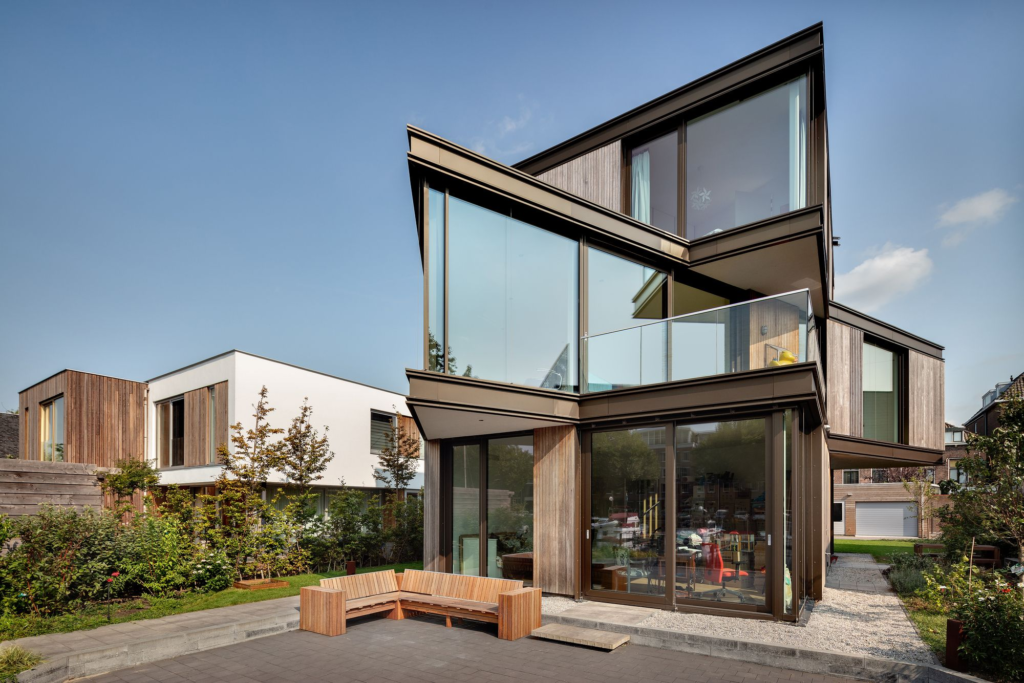Understanding the architectural style of your house can provide valuable insights into its history, design principles, and cultural significance. Whether you’re a homeowner, an architecture enthusiast, or someone working with an architecture studio in Sydney, identifying your house’s design era can enhance your appreciation of its unique features and help you maintain its integrity during renovations.

Colonial Style (1600-1800)
Colonial architecture refers to the styles brought by European settlers to America. These houses are symmetrical, with a centred front door and evenly spaced windows. They may include decorative elements like pilasters and pediments, commonly seen in New England.
Georgian Style (1714-1830)
Georgian architecture, named after the British monarchs, is characterised by its proportion and balance. Homes built in this style have a panelled front door at the centre, brick or stone facades, and sash windows with small panes. If you’re collaborating with an apartment building architect in Sydney, understanding Georgian principles can inspire designs that emphasise symmetry and classical details.
Victorian Style (1837-1901)
The Victorian era saw a flourish of decorative and eclectic architectural styles. Key features include steeply pitched roofs, textured wall surfaces, and ornate trim. Styles under the Victorian umbrella include Gothic Revival, with its pointed arches and intricate woodwork, and Queen Anne, noted for its asymmetry, turrets, and expansive porches. An architecture studio in Sydney might draw on these intricate details when designing heritage-inspired homes.
Craftsman Style (1905-1930)
Craftsman architecture emerged from the Arts and Crafts movement, emphasising handcrafted quality and natural materials. These homes feature low-pitched gabled roofs, wide eaves with exposed rafters, and a front porch supported by thick square columns. Inside, expect built-in furniture and a focus on woodwork. When working on residential projects, a Sydney architecture studio might incorporate these elements to create warm, inviting spaces.
Art Deco Style (1920s-1940s)
Art Deco architecture is known for its bold geometric shapes, vibrant colours, and luxurious materials. Common features include stucco walls, flat roofs, and decorative elements like zigzags, chevrons, and sunbursts. An architect might use Art Deco motifs in apartment buildings to add glamour and historical context.
Mid-Century Modern (1945-1970)
Mid-century modern design is characterised by clean lines, minimal ornamentation, and an integration with nature. Homes feature large glass windows, open floor plans, and a blend of natural and industrial materials. If you’re consulting with an architecture studio in Sydney, this style’s emphasis on simplicity and functionality might influence contemporary residential projects in urban settings.
Contemporary Style (1970s-Present)
Contemporary architecture evolves with time, incorporating elements from various styles while emphasising sustainability, technology, and innovation. These homes might feature open spaces, large windows, and the use of eco-friendly materials. In Sydney, a contemporary apartment building architect might prioritise energy efficiency and smart home technologies, reflecting current trends and advancements in design.
How to Determine Your House’s Design Era
Identifying the architectural style of your house involves examining various elements, including the roofline, windows, doors, and decorative details. Here are some steps to help you determine your house’s design era:
- Research Historical Context: Start by researching the time your house was built. Local historical societies or archives can provide information on popular styles in your region at that time.
- Examine Key Features: Note the shape and pitch of the roof, the style and placement of windows and doors, and any decorative elements like mouldings, columns, or brackets.
- Compare with Style Guides: Use architectural style guides or online resources to compare your findings. Pay attention to the defining characteristics of each style and see which ones match your house.
- Consult Professionals: If you’re still unsure, consider consulting with an architecture studio in Sydney or a local architect specialising in historic preservation. They can provide expert insights and help you accurately identify the style.
The Importance of Architectural Style
Understanding the architectural style of your house is not only an academic exercise; it also has practical implications. Here are a few reasons why it matters:
- Renovation and Restoration: Knowing your house’s style can guide renovations and restorations, ensuring that changes follow the original design. This is important for historic homes, where preserving architectural integrity adds value.
- Real Estate Value: Homes that retain their architectural authenticity have higher real estate value. Buyers appreciate the charm and character of period-specific details.
- Personal Enjoyment: For homeowners, understanding the architectural style can enhance the enjoyment of living in a space that reflects a certain historical or aesthetic sensibility.
- Cultural Heritage: Each architectural style represents a piece of cultural heritage. Maintaining and celebrating these styles, preserve the history and identity of communities.
Conclusion
Whether you’re a homeowner, a history buff, or working with an apartment building architect, understanding the architectural style of your house can deepen your appreciation and guide informed decisions about its care and maintenance. From the symmetrical elegance of Georgian homes to the handcrafted beauty of Craftsman bungalows, each style tells a story of the era in which it was born. By recognising and preserving these styles, keep a tangible connection to architectural heritage.
In Sydney, where diverse architectural influences converge, working with a knowledgeable architecture studio can help ensure that both new constructions and renovations respect and enhance the existing built environment. Whether preserving a Victorian gem or designing a sleek contemporary apartment, the key lies in understanding the unique language of architectural styles.








1 thought on “Architectural Styles Explained: How To Determine Your House’s Design Era”